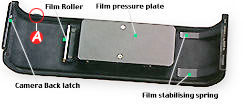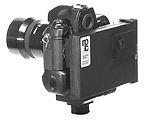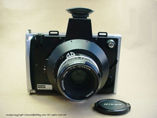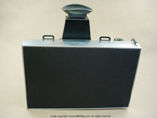|
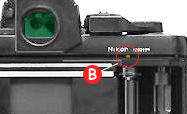 |
|
|
If your frame counter won't work, check if both of these mate probably or the most likely culprit is the Counter Switch which would require slight adjustments.
It is standard for the camera back on all Nikon F3 camera models to be removable so that accessory backs can be added. Removing a film back is easy, first open the back, on the hinge side you will see a small chrome pin protruding from the hinge.
This pin is moved downward in its slot and this retracts one of the hinge pins allowing the back to be swung away and removed from the camera. Fitting an accessory back is a simple matter of reversing this procedure. You can then replace the standard camera film back with some optional accessory film backs designed specifically for the Nikon F3.
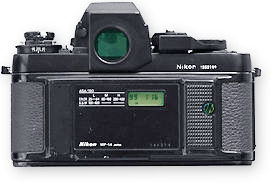 |
|
Another group of the film backs provide a feature that can be used to record the data desired directly onto the film at the time of exposure. Thus, to differentiate between these two groups, one is called film back and another is called Databack
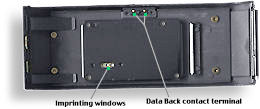 Note: Film back used here for illustration for is inverted, too lazy to revert...sorry. |
|
Compared with an ordinary film back, there are two data contact terminals and an imprinting panel for superimposing the desired data to transfer onto film during an exposure.
Detailed below are
the few film back and Databack options available for the Nikon F3. Please not these
film backs are not compatible with the earlier F2 cameras nor with the F4 or the
current F5. Well, basically the film back designs are still pretty conservative
if compared with the current multi-features of a command back designed for the high-tech autofocus
cameras. The Nikon F3 was not designed as such, reliability was its priority list.
Whatever, twenty years has past, one can't deny the fact that even some time honoured features
found in a F3 can look so simple in comparison. The MF-14, like the MF-16 Databack
(For the popular mid-compact Nikon bodies such as FMs, FEs and FA) is using Liquid
Crystal Display (LCD) and they were programmed to function until the year
2100 (Where I am not so sure for the rest). Anyway, even the cable-required Databack
MF-12 for the FEs, FA and FM2(n) is programmed to year 2019.
I was going through old Nikon Factory literature published during the early eighties
and noticed Nikon mentioned a "MF-15" Databack and also a MF-6 autostop
film back for the Nikon F3 in there. The "Databack MF-15" has the same
appearance with the current MF-14 and I am not convinced it was a "MF-15"
which has been repeatedly mentioned. I did a high resolution scan and found it was
marked a "MF-14" instead of "MF-15" on the printed databack.
Anyway, the databack for the Nikon FG was MF-15 and that is why it caught my eyes...
However, other than these two film backs, it did mentioned a "...special option
to produce Instant Polaroid ® pictures, the "Speed Magny
". I have little knowledge regarding this "Speed Magny", other
than the more modern NPC ProBack or older Forsher Back, so, if anyone
of you have users' experience, images or info relating to this, please mail me -
appropriate credit will be given.
 |
|
Nikon had their earlier Databack which requires a cable to plug into the PC terminal such as the MF-12 Databack When subsequent models were designed, databack terminals were incorporated behind the camera body which eliminates such requirements. So did the F3 and the newer series of Databack
|
|
|
|
Nikon PREVIEW Camera |
The MF-21 designed for the autofocus camera F-801 in 1988 represents the first wave in such high-tech command back design rather than performing just a databack which provided basic date and time imprinting functions.
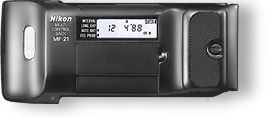 |
|
MF-6B Camera Back is also called Auto Film-Stop Back. Use especially well with the fast auto rewind MD-4 motor drive, it attaches to any F3-series camera in place of standard camera back for automatic film rewind-stop, with the film leader being left outside of the cartridge to permit easier darkroom handling.
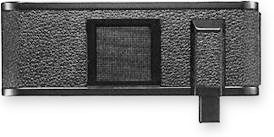 MF-6B Camera Back |
|
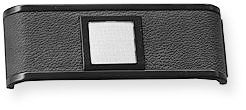 |
|
|
| | | Back to Index of Nikon F3 Models Back to Pictorial History of Nikon SLRs |
|
|||||
|
|||||||
The MF-14,
MF-18 and Databack or Bulk Film Backs Options
| About this photographic site | Contributions and Credits |
 |
Home - Photography in Malaysia |
